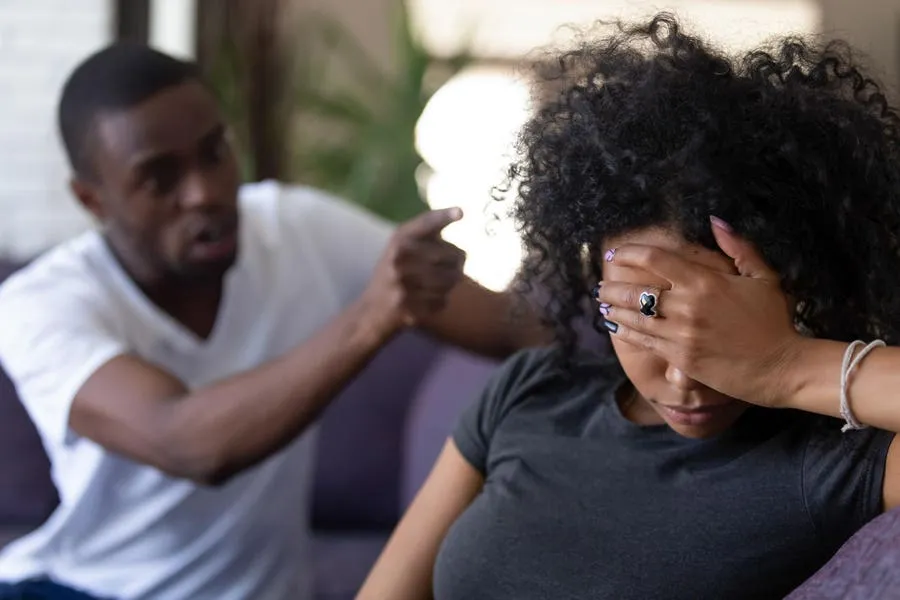Forbes contributors publish independent expert analyses and insights.
The Sean "Diddy" Combs trial -- charging the music mogul and entertainer on federal charges, including sex trafficking and racketeering conspiracy -- remains a trending topic on social media and seems to be the center of most pop culture water cooler conversations. While most people are drawn to the trial for its juicy details and highly sensationalized and disturbing allegations, some argue that the trial highlights deeper issues that exist within the judicial system and the continued oppression of women of color. More specially, the Diddy trial highlights potential flaws in the judicial system in how issues of coercion, trauma, and physical and sexual abuse are handled and the chronic and ongoing discrediting, silencing, and disbelief of Black women in the public eye.
Judge Arun Subramanian barred expert testimony on coercive control, which allowed the defense to capitalize on presenting evidence without context. For instance, during cross-examination, the defense had witness 'Jane' read text messages between herself and Diddy aloud, suggesting consent or friendliness -- a tactic often used to undermine credibility without expert context on trauma or coercion. That said, a new witness ("Jane") has corroborated Cassie Ventura's and 'Mia's' testimonies, describing similar patterns of coercion, surveillance, and transactional silence. Although the testimony provides new insight, it does not truly help to paint a clear picture of abuse - much less sex trafficking or racketeering -- because, again, it lacks contextualization within the frame of coercion and trauma.
The term "coercive control" was first coined by social worker Susan Schechter and has been instrumental in better conceptualizing the cycle of abuse in abusive relationships and the effects of abuse on survivors. Coercive control is the idea that abusers rarely use brute force as a method of control but instead rely on coercive mental and emotional abuse tactics to control, which are just as effective, if not more so. These types of behaviors might include intentionally confusing their partner and causing them extreme anxiety. Or, continually tearing a partner down emotionally." Simply put, coercive control can be thought of as a pattern of controlling behavior, manipulation, and emotional abuse over time.
Some argue that using experts in the field to introduce coercive control to the jury may help them better contextualize much of the evidence they are considering. Not doing so leaves them without crucial context for understanding how prolonged abuse operates without physical violence. But this is not an issue that only exists in the Diddy trial. While there has been some progress in recognizing coercive control in legal contexts, particularly in certain states and internationally, it is still not universally or explicitly defined in most legal systems.
However, the topic of intimate partner violence overall is not completely foreign in the judicial system. "Battered woman syndrome" has historically been used in court to describe the psychological effects of intimate partner violence on women, which can include trauma and cognitive harm. While still in wide use in courtrooms as a legal defense, the concept has long been a source of debate, with many experts framing it as part of general PTSD. While using battered woman syndrome as a framework to understand abuse is helpful, it does not fully capture the associated patterns and effects of non-violent abuse. Consequently, legal advocates have argued for decades for a better descriptor that emphasizes nonphysical forms of abuse as well as physical abuse. Yet, the concept of coercive control remains relatively limited in courts.
According to recent studies, coercive control is present in almost 60% of relationships in which intimate partner violence is present, and even non-violent coercive control can cause PTSD, depression, and ongoing fear in survivors - all of which is critical information that the jury in the Diddy case should be aware. Moreover, coercive control is so harmful that it is criminalized in the UK, and seven states have passed laws that say coercive control is a form of domestic violence, though how they have applied those laws varies by state. U.S. courts have been slow to adopt the concept, and some argue that Judge Arun Subramanian's decision reflects this stalled progress.
Interestingly, despite coercive control not being widely recognized in the U.S. court system, the general idea of coercion is very much the same. Coercion by the U.S. legal system is described as being compelled, forced, or threatened to act in a specific way. Barring this understanding from the Diddy trial not only takes away context but also helps to perpetuate the narrative that the survivor is somehow complicit in their abuse. This is especially true for Black women, who despite being more likely to be involved in an abusive intimate partner relationship are less likely to get the help they need to leave the relationship. This can look like responding to allegations of abuse with "She's just saying that to get money" or "If it was so bad, why didn't she just leave." These are both examples of victim blaming and shaming that are often directed toward Black women and add to them silenced, discredited, not believed, and ultimately invisible
Others argue that coercive control remains limited in U.S. courts due to it being coercive and hard to identify. There is also ongoing debate among experts about whether codifying language around coercive control is helpful or harmful. After all, gaslighting and manipulation can be harder to identify than physical abuse, explicit threats, or stalking behaviors. More covert and implicit behaviors are also easier for abusers to deflect, excuse away, and blame their partner for.
